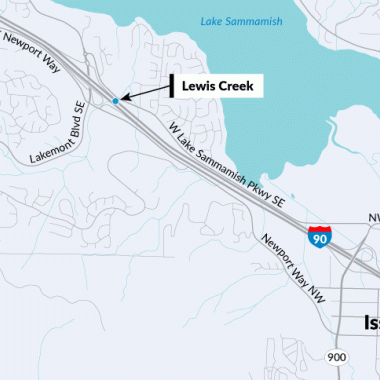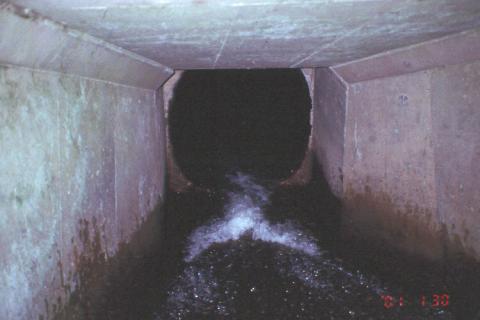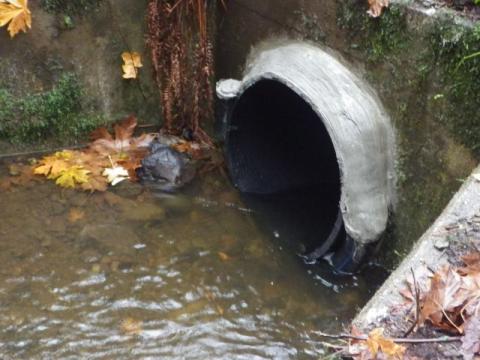Project overview
Reconnecting waterways where our roads act as barriers is a priority for the state. In western Washington, that means building hundreds of fish passable structures under state highways to create habitat essential for meeting fish recovery goals. Beginning in 2025, WSDOT will build multiple structures that may include new bridges on I-90 and local roads near Issaquah to restore natural stream conditions in Lewis, West Village Park and Schneider creeks.
What to expect
I-90 travelers and users of local roads can expect:
- Overnight lane reductions.
- Long-term lane reductions and traffic shifts in both directions of I-90.
- Detours around closed on- and off-ramps and surface streets.
This project combines several fish passage projects into a single contract. Originally it included fish passage work on SR 900, but that work has been shifted to a separate new project, likely to be advertised in late 2026. Because of the multiple locations, we can’t say at this time when work will occur at the I-90 sites. Survey work has started; roadway work could begin in late 2025. We anticipate construction at these locations could take two to three years each.
This map shows the location of a fish barrier on Lewis Creek where it passes under I-90 west of Issaquah.
To protect and restore fish runs, WSDOT is correcting fish barriers found under state highways. Since 1991, when WSDOT created a dedicated program, hundreds barriers have been corrected, opening more than 1,200 miles of fish habitat.
Replacing the culverts that carry Lewis, West Village Park and Schneider creeks under I-90 and adjacent surface streets with new fish passable structures increases the likelihood of fish migration in these streams.
Opening habitat allows more salmon and steelhead at all life stages, including juveniles that aren’t yet strong swimmers like adults, to access important spawning and rearing habitat, including areas that haven’t been accessed in years.
Improvements to fish passage also benefits commercial seafood operations, recreational fishers and provides more food for our declining orca population. In addition, replacing these culverts helps us meeting our obligation to remove barriers under a 2013 U.S. District Court injunction.
About the creeks at I-90
Lewis Creek runs under I-90 near Lakemont Boulevard. It serves as a tributary to Lake Sammamish. The culverts under I-90 are considered completely impassable. Lewis Creek is home to Chinook, coho, resident trout, steelhead, sockeye and sea-run cutthroat. Replacing the existing culverts with a new fish passable structure will result in a potential habitat gain of more than 2.5 miles.
West Village Park Creek flows under I-90 just east of Southeast 51st Street. As a tributary to Lake Sammamish, the creek is home to Coho, resident trout, steelhead, and sea-run cutthroat. The culvert carrying the creek is considered completely impassable. There is a potential habitat gain of more than a half-mile by replacing the existing culvert with a new fish passable structure.
Schneider Creek is located near the west edge of Lake Sammamish State Park and runs under I-90 as well. It is only 33% percent passable. The Coho, resident trout, steelhead, sockeye salmon and sea-run cutthroat runs will be better served by a larger structure, offering a potential gain of nearly three-quarters of a mile of new habitat.



